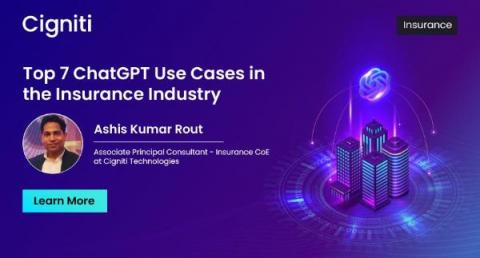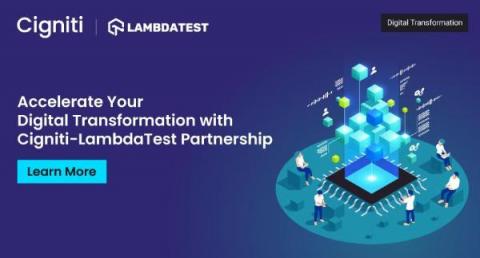Systems | Development | Analytics | API | Testing
May 2023
5 Effective Ways of Performing Periodic Project Hygiene Checks for Successful Delivery
Why are IT projects unsuccessful? What could be the reasons for failure? Project failures can be due to many reasons and may vary from several issues ranging from trivial to significant blockers during execution. These impact budgets, deadlines, goals, and not meeting the program’s success criteria or definition of done. According to a PwC study of over 10,640 projects, only a tiny portion of companies – 2.5% to be exact – completed 100% of their assignments successfully.
6 Tips to Prevent a Ransomware Attack
Ransomware is a malware that encrypts information and documents and demands a rescue quantum for decoding them. Ransom payment is made by cryptocurrencies like Bitcoin, facilitating online and anonymous payment.
Cigniti - Broadcom's TDM Solution: Unlocking Benefits in Cost, Compliance, and Security
5 Ways a Modern Application Architecture Can Benefit Your Organization
The need for organizations to compete in a changing market more rapidly than ever motivates the necessity for a robust modern application architecture. Organizations’ demand for new application features and capabilities constantly changes, and developers need help to keep up with change requests utilizing legacy application development tools and underlying infrastructure.
4 Key Challenges a Unified Enterprise Test Execution Environment Can Solve
In today’s fast-paced and competitive business environment, ensuring high-quality software applications has become a critical success factor for enterprises. To achieve this, they are incorporating DevOps practices to accelerate their software development and Continuous Testing practices to test early and often to provide quality software.
Future of Payments in the Virtual and Augmented World
Virtual Reality (VR) immerses you in an artificial environment, effectively substituting your natural surroundings with a virtual world. By utilizing a VR headset or a smart device, you can explore various physical stores and browse their entire range of products, all from the comfort of your home.
Best Practices in a Continuous Delivery Enterprise: Building Standardized Tooling and Pipes for a Bi-Modal Operating Model
As firms embrace digital transformation, it is crucial to build continuous delivery methodologies that allow for the speedy deployment of software applications. An organization that uses continuous delivery fosters quicker innovation and expedites the delivery of products and services to customers. Building standardized tooling and pipes for a bi-modal operating model is one of the best practices in a continuous delivery company.
Top 7 ChatGPT Use Cases in the Insurance Industry
There has been much hype in the media surrounding language models like ChatGPT because they have the potential to revolutionize our interactions with computers and enable the automation of various tasks. ChatGPT is a natural language processing (NLP) platform driven by Artificial Intelligence (AI). It is trained on a large text dataset and can induce text based on input. ChatGPT can be used for a variety of tasks, similar as language restatement, text summarization, content generation, and more.
Accelerate Your Digital Transformation with Cigniti-LambdaTest Partnership
The world is continuously changing and evolving. Technology is at the heart of almost every business, and organizations need help to keep up with the pace of change. We are all familiar with digital transformation, but what does it mean? How can you use continuous testing to accelerate your digital transformation efforts?
Cigniti CFO Discusses Strong Q4 & FY2023 Performance with CNBC Bajar
5 Ways Good User Experience Positively Impacts Your Business
User experience (UX) design significantly grows your business and generates more revenue. Organizations across industries are adopting modern design sensibilities that help in client and user retention, increase customer experience and loyalty, and boost business revenue. According to a McKinsey report, organizations that apply UX design best practices with well-targeted business objectives can see a return on investment of 9,900% in less than five years.













